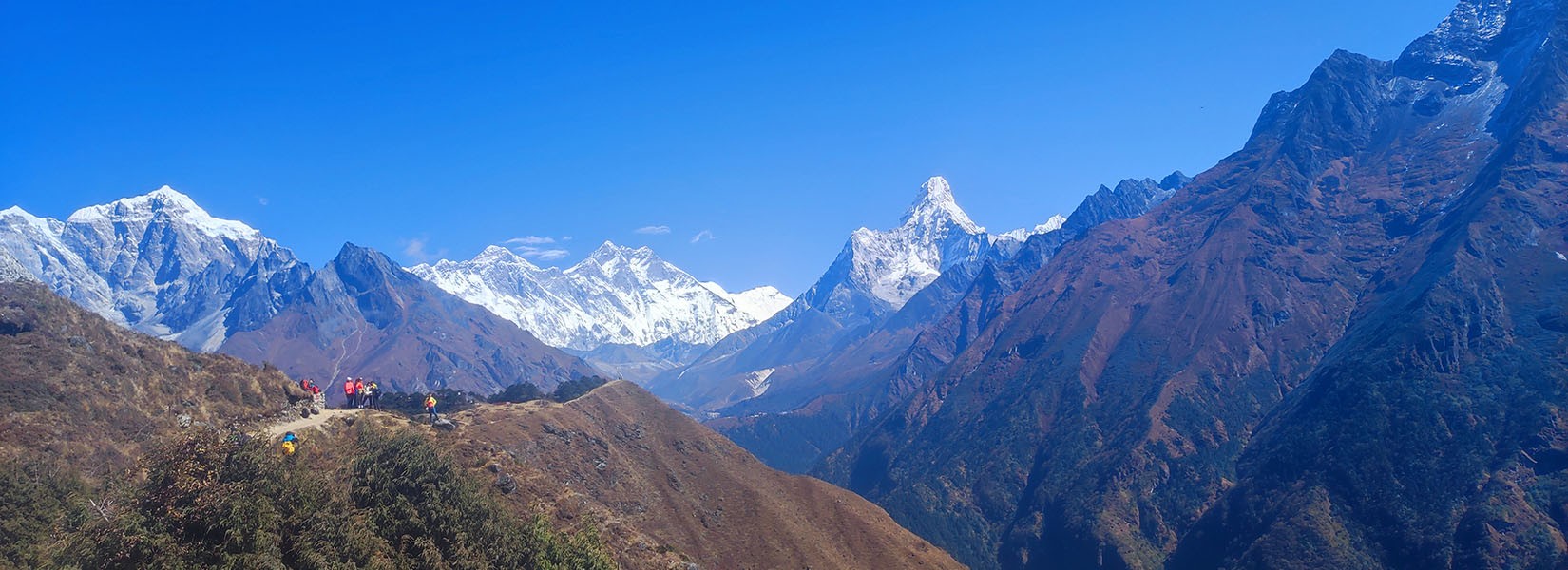About Everest Three Passes Trek - 15 Days
The Everest Three High Passes Trek is one of the most adventurous and challenging trekking experiences in Nepal, designed for trekkers who want to go beyond the classic Everest Base Camp route. This ultimate Everest trekking journey crosses three of the highest mountain passes in the Khumbu region—Kongma La (5,535 m / 18,159 ft), Cho La (5,420 m / 17,782 ft), and Renjo La (5,345 m / 17,536 ft)—making it a circuit that showcases the very best of the Everest Himalayas.
Unlike standard treks, the Three Passes route is a complete Everest circuit trek that combines dramatic mountain scenery, high-altitude adventure, and cultural immersion. Along the way, trekkers visit Everest Base Camp (5,364 m / 17,598 ft), climb iconic viewpoints like Kala Patthar (5,545 m / 18,192 ft), Gokyo Ri (5,360 m / 17,585 ft), and Chhukung Ri (5,545 m / 18,192 ft), and witness the breathtaking beauty of the Gokyo Lakes, Khumbu Glacier, and Ngozumpa Glacier—the largest glacier in Nepal. Each vantage point offers a panoramic view of the world’s highest peaks, including Mount Everest (8,848 m), Lhotse, Makalu, Cho Oyu, Ama Dablam, and Pumori.
The trek is not just about mountain passes and peaks; it’s also a journey through the heart of Sherpa culture. You will trek across remote villages, visit ancient monasteries, and experience the warm hospitality of the Himalayan people. The trail lies within the Sagarmatha National Park (1,148 sq. km), a UNESCO World Heritage Site rich in biodiversity. Here you may encounter unique wildlife such as the Himalayan thar, musk deer, snow leopard, red panda, and over 118 bird species. The alpine flora also changes dramatically with altitude, from lush forests of rhododendron and pine to barren high-altitude landscapes where plants barely grow.
Physically and mentally demanding, the Everest Three Passes Trek is recommended for experienced trekkers with good fitness and stamina. Proper acclimatization is crucial as the trek involves sustained high-altitude hiking, often above 5,000 meters. For those who are bold, determined, and passionate about mountain adventures, this trek offers an unforgettable once-in-a-lifetime experience.
In short, the Everest Three High Passes Trek is the ultimate challenge in the Everest region—perfect for thrill-seekers and true mountain lovers who want to experience every highlight of Khumbu in a single journey.


